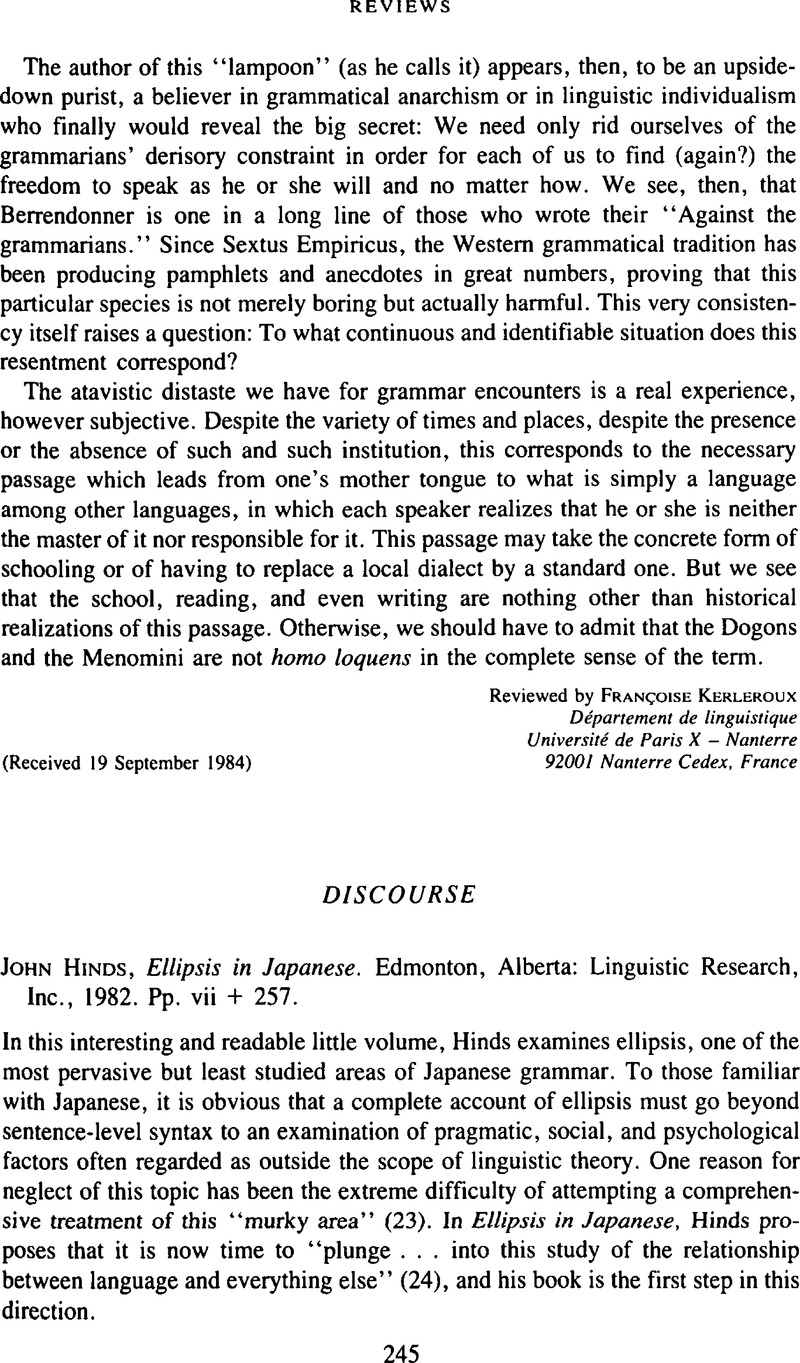No CrossRef data available.
Article contents
Discourse - Hinds John, Ellipsis in Japanese. Edmonton, Alberta: Linguistic Research, Inc., 1982. Pp. vii + 257.
Published online by Cambridge University Press: 18 December 2008
Abstract
An abstract is not available for this content so a preview has been provided. Please use the Get access link above for information on how to access this content.

- Type
- Book Review
- Information
- Copyright
- Copyright © Cambridge University Press 1985
References
Chafe, W. L. (1970). Meaning and the structure of language. Chicago: University of Chicago Press.Google Scholar
Fillmore, C. (1968). The case for case. In Bach, E. & Harms, R. (eds.), Universals in linguistic theory. New York: Holt, Rinehart & Winston.Google Scholar
Minsky, M. (1975). A framework for representing knowledge. In Winston, P. (ed.), The psychology of computer vision. New York: McGraw-Hill.Google Scholar
Norman, D., Rumelhart, D., & and LNR Research Group (1975). Explorations in cognition. San Francisco: Freeman.Google Scholar
Schank, R., & Abelson, R. (1977). Scripts, plans, and knowledge. Norwood, N.J.: Ablex.Google Scholar




